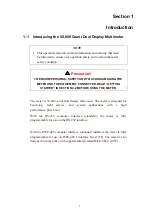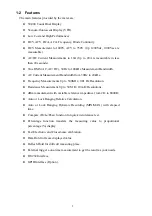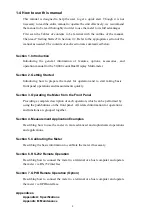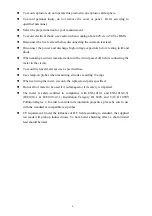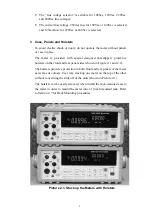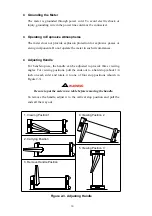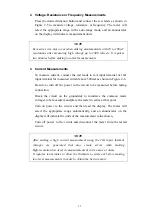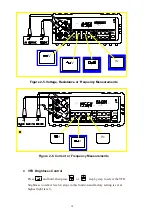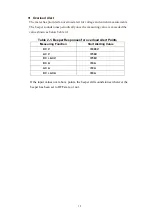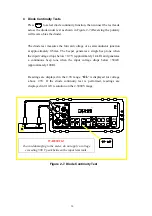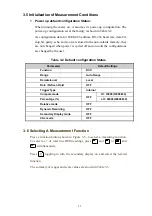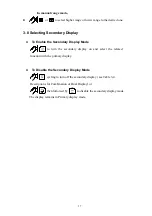
13
Voltage, Resistance or Frequency Measurements
Press the desired function button and connect the test leads as shown in
Figure 2-5 to measure voltage, resistance, or frequency. The meter will
select the appropriate range in the auto-range mode, and an annunciator
on the display will indicate measurement units.
NOTE
Excessive error may occur when making measurements with 10 to 100
µ
V
resolutions after measuring high voltage up to 1000 volts dc. It requires
two minutes before making low-level measurements.
Current Measurements
To measure current, connect the test leads to mA input terminal or 10A
input terminal for measured current above 500mA as shown in Figure 2-6.
Be sure to turn off the power in the circuit to be measured before taking
connection.
Break the circuit on the groundside to minimize the common mode
voltage) to be measured, and place the meter in series at that point.
Turn on power to the circuit, and then read the display. The meter will
select the appropriate range automatically, and an annunciator on the
display will indicate the units of the measurement value shown.
Turn off power to the circuit and disconnect the meter from the tested
circuit.
NOTE
After making a high current measurement using the 10A input, thermal
voltages are generated that may create errors when making
high-resolution low-level dc measurements of volts, amps, or ohms.
It requires ten minutes to allow the thermals to settle out before making
low-level measurements in order to obtain the best accuracy.



